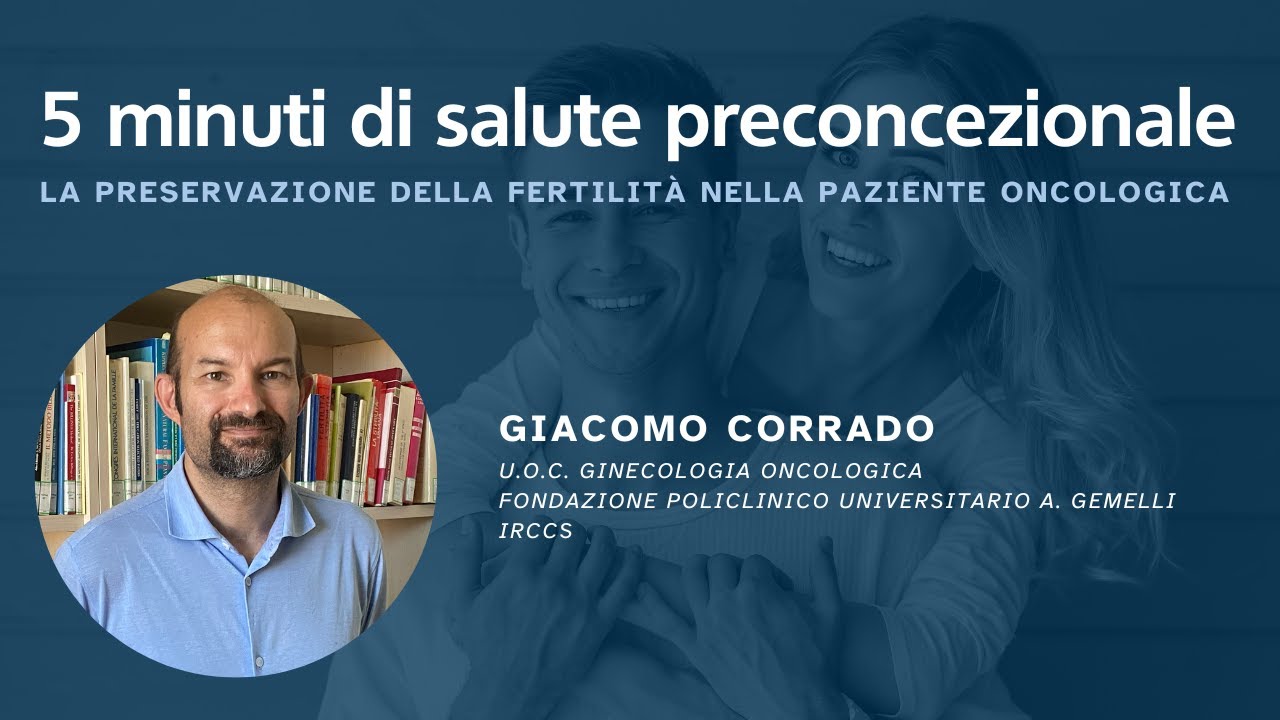Fertility preservation in cancer patients
In recent years, great strides have been made in the treatment of oncological diseases, thanks above all to the improvement of early diagnosis and treatments.
An increase in the number of cases of cancer patients of reproductive age has also been highlighted. In fact, 4% of women are under 40 years old at the time of cancer diagnosis and about 21% of gynecological cancers diagnosed each year fall into this age group. Faced with these data, it is clear that the oncologist can no longer limit himself to dealing only with the survival of the patient, but must also take charge of her quality of life with a careful look - in younger patients - at the possibility of having children.
It has now emerged, from all international and national recommendations, the importance of discussing the risk of infertility with patients of childbearing age and referring them to a specialist to assess the possibility of preserving fertility.
During the first consultation, the patient must be shown all the discomforts that the tumor can actually cause, focusing in particular on those that could compromise fertility. A careful analysis of the case will only be made starting from the type of tumor, its stage, the treatments previously recommended by the oncologist and the prognosis.
In fact, precisely with regard to oncological treatments, many of these - such as radiotherapy and chemotherapy - are themselves, although necessary for the treatment of the disease, a cause of infertility in cancer patients. They have a gonadotoxic effect, which can be more or less harmful. Patients often experience early and/or accelerated arrest of ovarian function, progressive reduction in the number of ovarian follicles and consequent sex hormone deficiency, amenorrhea/oligomenorrhea and hypoestrogenism. Fertility can be compromised by any treatment that interferes with the functioning of the ovaries, fallopian tubes, uterus, or cervix.
Following an initial evaluation, possible solutions and recommended preservation methods are listed depending on the patient's clinical condition. Among these, one of the first treatments to be considered, where prolonged exposure to radiation of the abdominopelvic region is expected for the patient, is ovarian transposition, i.e. a surgical procedure that involves the relocation of the ovaries to a region that is generally more lateral and superior, so as to preserve them from direct exposure to radiation. Along with surgical practice, the use of GNRH analogues for the protection of ovarian function during chemotherapy has also been shown to be effective. These treatments are combined with the possibility of performing cryopreservation of oocytes or ovarian tissue or embryos (the latter is prohibited in Italy). These are techniques that are effective for the preservation of fertility in cancer patients
The only fertility preservation technique that allows you to have a spontaneous pregnancy in the future is the cryopreservation of ovarian tissue. This method consists of taking the ovarian cortical (the external part of the ovary) through an operation performed laparoscopically, thus resulting in a lower degree of post-operative discomfort for the patient. At the appropriate time, the ovarian tissue taken will be reimplanted in the patient, ensuring, in most cases, a good level of fertility for at least 2 years after treatment.
Introducing this topic at the time of diagnosis allows the patient to have time to reflect, gather information and decide what to do.
Thus a new discipline was born that combines oncology and reproductive medicine: oncofertility, in which a gynecologist oncologist, a psychologist, a biologist and an expert in human reproduction discuss together in order to offer the patient the best fertility preservation treatment.
read more
-
Climate change and birth rateClimate change and fertility; A general topic for a particular problem that is still little studied and little investigated. We are all realizing how much climate change impacts our lives and how necessary it is to stem it, but few have carried out an analysis of the correlation between this phenomenon and the ability to procreate. We talk about it with Prof. Walter Ricciardi.
-
Welfare and birth rateThe Welfare State, developed since the nineteenth century to mitigate social risks such as unemployment and illness, has contributed significantly to the lengthening of the average life expectancy and to the change in the role of women in society. This change has influenced the traditional view of the family and has made it more difficult for women to reconcile work and family, also affecting historical birth rates. Prof. Gilberto Turati explains the current situation and the dynamics underlying it.
-
Andrological preventionWhen we talk about andrological prevention, we are probably entering a field unknown to many. Contrary to what happens for the female counterpart. In fact, the average age of the first gynecological examination is 15 years, unlike what happens in males where the first andrological specialist check-up often comes at a much older age, at the onset of clinical symptoms or when trying to get pregnant. Why is prevention important in the andrological field? This is what Dr. Carmine Bruno explains.
